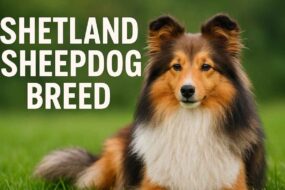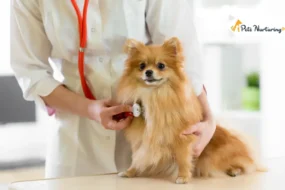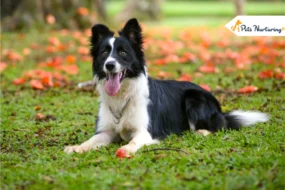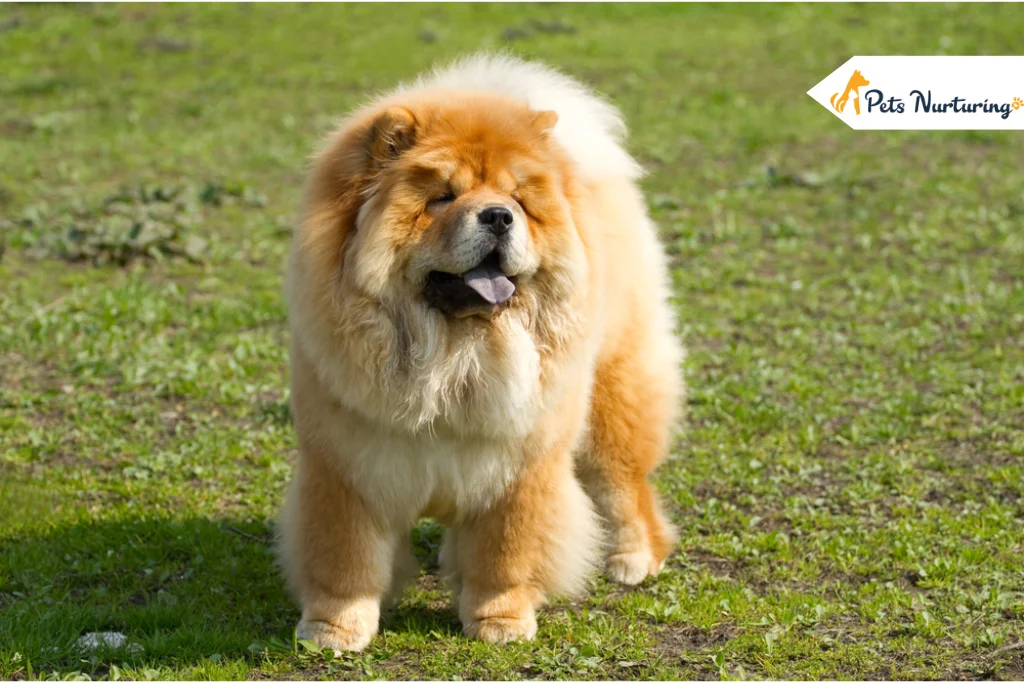
If you are searching for a big fluffy dog with a lion-like mane, meet Chow Chow. This ancient Chinese breed is known for its thick double coat, authoritativeness, and distinctive blue-black tongue.
The Chow Chow is often called the “Chow” and is known for its unique appearance and independent personality. The Chow originated from China and was bred for multiple purposes, including hunting, guarding, and pulling carts.
However, Chow gained popularity as a pet when Queen Victoria of England expressed her fascination with these breeds. So, if you want to pet one of the cutest dogs, Chow Chow, continue reading this blog. The blog will offer comprehensive views about Chow Chow dog that will help you make decisions about getting this dog.
Ready to explore more about the Chow? Let’s get started.
Chow Chow Dog Overview
Breed Group: Guard Dog
Height: 17 to 20 Inches Taller from Shoulder
Weight: 40 to 70 Pounds
Lifespan: 10 to 15 Years
Coat: Short, Smooth, and Rough
Color: Cream, Red, Cinnamon, Black, Blue
Vocal Level: Less Vocal
Temperament: Loyal, Friendly, Independent, and Aloof
Needs of Grooming : High
Hypoallergenic: No
Origin: China
History
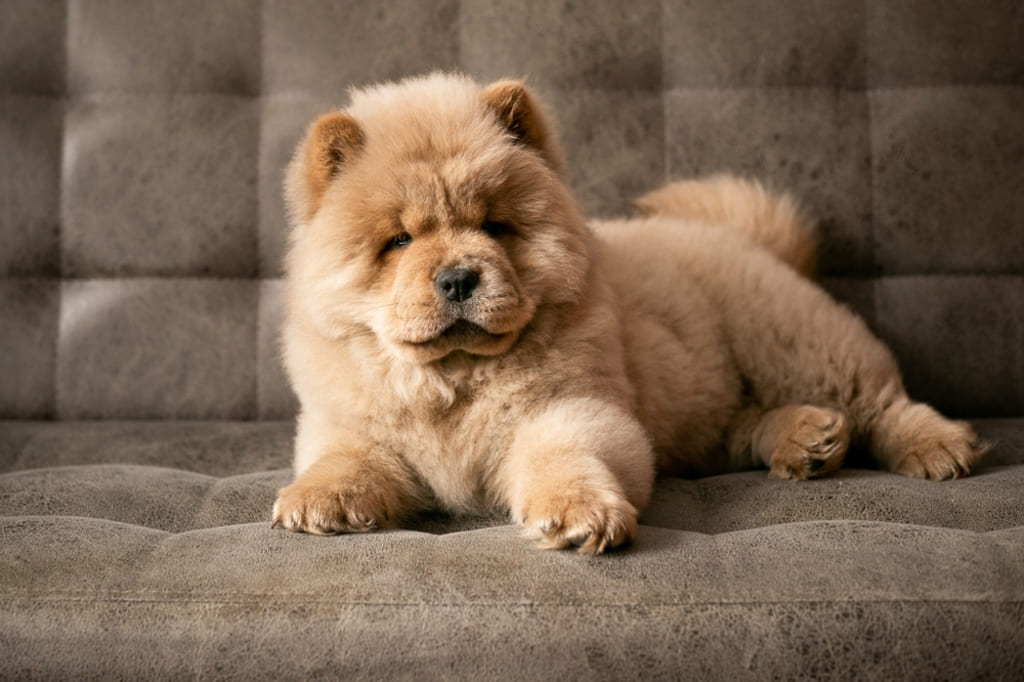
The Chow Chow’s history dates to around 206 B.C. during the Han Dynasty in China. This breed was initially developed for various purposes, including hunting companions in Siberia, herding dogs in Mongolia, working dogs in China pulling sleds, and guarding temples.
The Chow Chow found favor among Chinese royalty, particularly during the Tang Dynasty. Emperors admired their regal appearance and kept them as palace guards. Some historical accounts suggest that Chow Chows were selectively bred for their unique blue-black tongue, a trait not seen in many other dog breeds.
However, impressed with its sparkling fascination and exotic beauty, the European merchants brought Chows to the West from China during the 1800s. The breed became popular in England and was later introduced in the United States of America in the 20th century.
Further, during the Chinese Revolution in the early 20th century, the breed faced a decline, and many Chows were lost. However, dedicated breed enthusiasts in both China and the West worked to preserve and promote the breed. The American Kennel Club officially recognized the Chow Chow in 1903.
Appearance
The Chow Chow has a distinctive appearance marked by a combination of unique features that make this breed apart from other dog breeds.
This dog breed has a distinguished lion-like mane, making it look grand and majestic.
Chow Chow carries thick, fluffy double coats around the head and neck, resembling a Lion and earning them the nickname ” Lion Dog.”
The Chow Chow boasts a wide and flat head, marked by a clear distinction between the forehead and muzzle. The breed is known for its distinctive “scowling” expression, attributed to the unique structure of its eyes and forehead.
Moreover, Chow Chow has a broad, deep muzzle that is square. The nose is large and black, contributing to the breed’s characteristic facial features. Uniquely, Chow Chows have a blue-black tongue, a hallmark trait not commonly found in other breeds.
The physical trait that makes Chow Chow look cute is their ears. The triangular ears are rounded at the tips and stand erect. The position and shape of the ears add to the Chow Chow’s alert and dignified expression.
Chow Chow has a compact and sturdy build with a straight and a well-balanced back. The tail is set high, carried over the back, and may have a distinctive curl.
The posture that makes Chow Chow look sure-footed and powerful is their straight and muscular limbs and paws, which are compact and round, making them look like a Lion.
| Male Chow Chow | Female Chow Chow | |
| Weight | 55 to 70 Pounds | 45 to 60 Pounds |
| Height | 19 to 22 Inches | 18 to 20 Inches |
Coat and Color
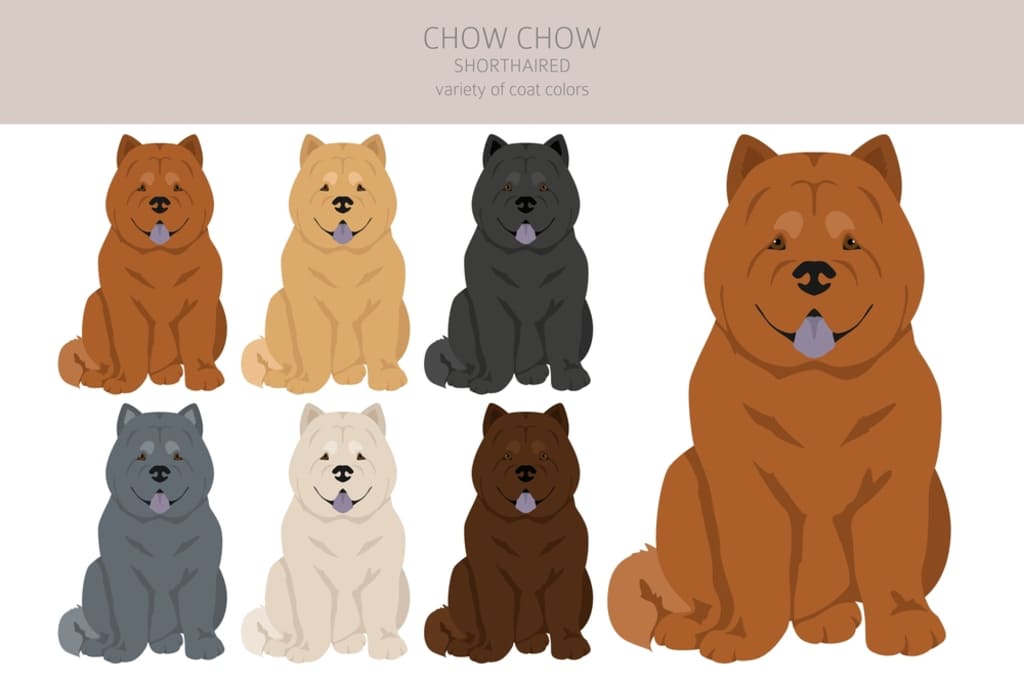
The Chow Chow’s coat and color are undeniable stars of the show, contributing to their iconic and elegant appearance.
This fluffy dog breed comes with two types of coats: smooth and rough.
Rough coat: The rough coat is dense, straight, and stands off from the body. It resembles a lion’s mane. It offers ample insulation and weather protection, perfect for their ancient roots in harsh climates.
Smooth Coat: The soft coat is shorter, straight, and lies close to the body. It has a coarser texture compared to the rough coat. Such a coat requires less grooming compared to a rough coat.
About colors, Chow Chow comes in a variety of colors that include:
- Red
- Black
- Blue
- Cinnamon
- Cream
Characteristics and Temperament
Chow Chows are known for their strong sense of independence. They’re not typically lap dogs and prefer having their own space. Instead, they prefer independence over constant affection.
While they may not be overly demonstrative, Chow Chows are fiercely loyal to their families. They form strong bonds with their owners and are often protective of them.
Moreover, Chow Chows can be reserved and aloof, especially with strangers. They are known for their wise nature and may take time to warm up to new people and situations.
This breed is generally calm and dignified, rarely barks excessively, and prefers to observe the world with quiet curiosity.
They like to stay clean. They are known for their clean habits. However, they may exhibit grooming behaviors similar to cats, such as cleaning paws. This cleanliness is a distinctive trait of the breed.
Health and Nutrition
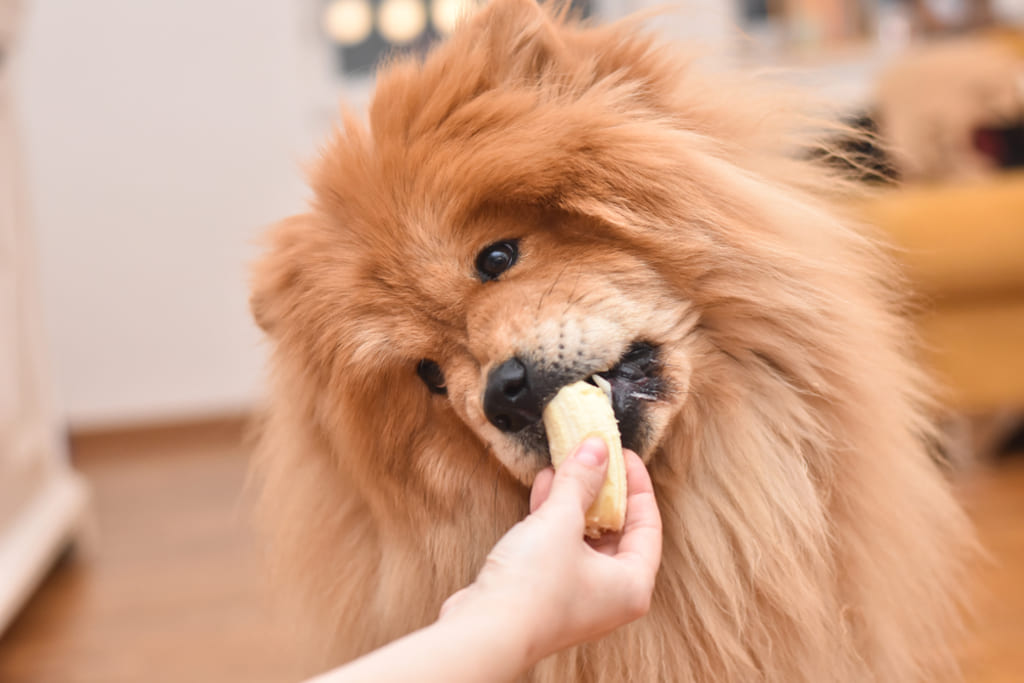
About their nutrition, you should take into consideration the following key aspects:
- Provide high-quality, balanced dog food suitable for the Chow Chow’s age, size, and activity level.
- Establish a consistent feeding schedule, dividing meals into two or three portions throughout the day.
- Avoid providing human food, especially items that can be toxic to dogs.
- Avoid providing overfeeding and limit treats to prevent weight gain.
- Before altering the Chow Chow’s diet or adjusting the portion sizes, it is advisable to seek guidance from a veterinarian.
- Provide daily exercise to maintain their physical health and prevent boredom.
- Engage them in mentally stimulating activities to satisfy their intelligence.
Here is the table that demonstrates the estimated feeding plan for Chow Chow:
| Chow Chow | Number of Cups | Number of Times |
| Puppies | 1.5 to 2.5 Cups | Multiple times a day |
| Adults | 2 to 3 cups | Twice a Day |
| Seniors | Adjustable | Twice a Day |
However, this is an estimated feeding plan. Make sure you consult a veterinarian for the most suitable feeding plan for your specific dog.
Regarding their health issues, here are the common problems that the Chow Chow breed may face:
- Chow Chows can be sensitive to extreme temperatures, particularly heat. Ensure they have a calm and shaded space during hot weather.
- Chow Chows are prone to joint problems; consider joint supplements and consult a veterinarian for appropriate recommendations.
- Hip Dysplasia is another common issue in Chow Chow, where the hip joint doesn’t fit into the hip socket correctly. This can lead to arthritis over time.
- Similar to hip dysplasia, elbow dysplasia is a malformation of the elbow joint, often leading to lameness.
- Hypothyroidism, an underactive thyroid, can occur in Chow Chows. This can affect metabolism and overall health.
- Chow Chows may be prone to allergies, manifesting as skin irritations, itching, and gastrointestinal issues.
- Like many large breeds, Chow Chow can be prone to various forms of cancer. Regular veterinary check-ups are essential for early detection.
Remember, not every Chow Chow dog breed suffers from these health issues. Regular check-ups and high-quality nutrition help you keep your dog fit and healthy.
Behavior and Training
Chow Chow dogs are independent and may not seek constant assistance. They appreciate their own space. Despite their independent nature, Chow Chows are known for their loyalty and can form strong bonds with their family.
Bred as a guard dog, Chow Chow can be a protective companion if they are socialized in the early years. They may behave reserved or aloof with strangers due to their independent nature, but with early training and socialization, one can prevent excessive shyness and aggression. Further, as they are territorial exhibits, Chow Chow can be stubborn; providing continuous patient training is essential.
As their training, socializing is integral to their development, helping Chow Chows become well-adjusted and confident in various environments.
hrough consistent training routines, one can socialize and train Chow Chow perfectly. Regular, short training sessions are more effective than infrequent, lengthy ones.
Moreover, during training, establish yourself as a leader. Chow Chow respects authority, and transparent leadership helps prevent dominant behavior. Provide regular exercise to avoid boredom and excess energy. A well-exercised Chow Chow is more likely to exhibit good behavior.
If you are a first-time dog owner, consider enrolling a professional trainer for your breed because incorrect training methods can result in misbehavior in dogs and may adversely affect their overall well-being.
Grooming Needs

Chow Chows have either a smooth double or rough coat. The rough coat is extended and stands off from the body, while the soft jacket is shorter and lies close to the skin. Regular brushing is essential to prevent matting and reduce shedding.
However, you can follow the grooming needs for your Chow Chow dog:
| Brooming Needs | Rough Coat | Smooth Coat |
| Brushing | Regularly | 2-3 times a week |
| Bathing | Every 4-6 weeks | Every 6-8 weeks |
| Ears Cleaning | Weekly | Weekly |
| Ears Hair Trimming | As needed | As needed |
| Teeth Cleaning | Daily | Daily |
| Nails Cleaning | Every 2-3 weeks | Every 2-3 weeks |
| Paw Care | Regularly | Regularly |
| Skin and Coat Inspection | During brushing | During brushing |
| Eye Care | Weekly | Weekly |
| Anal Gland Expression | As needed | As needed |
Is Chow Chow Hypoallergenic?
Chow Chows are not considered hypoallergenic. They are one of the breeds known to be less suitable for individuals with dog allergies. Chow Chows naturally produce a high amount of dander due to their thick coat and constant shedding, making them a challenge for allergy sufferers.
Hence, spending time with Chow Chow before bringing them home is essential. Furthermore, Regular grooming and maintaining a clean living environment can help minimize allergens but may not eliminate them. If someone has allergies and is considering a dog, it’s advisable to consult with an allergist and spend time with different breeds to determine compatibility.
Price
The Chow Chow dog price may vary depending on the breed’s age, weight, and height. However, you can refer to the following table to get the estimated price of a Chow Chow dog.
| Type of Purchase | Price |
| Price of Chow Chow from a Reputable Breeder | $1000 – $4000 |
| Chow Chow Puppy or Purchase from Backyard Breeders | $300 – $500 |
| Adoption from shelter | $50- $100 |
Further, you can also have Chow Chow dogs for sale if you want to get these dogs at a reasonable price.
Remember, while purchasing the dog from a breeder, do not forget to check its health records, inquire about the living conditions and socialization efforts, and request information about the puppy’s parents to ensure a responsible and reputable breeding practice.
Life span
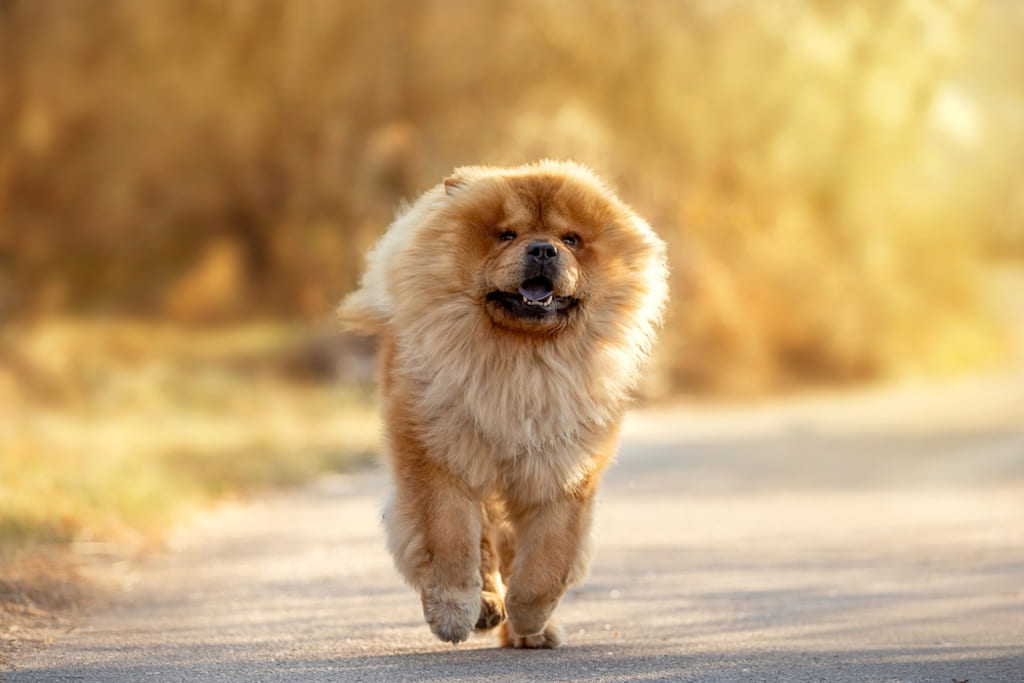
The average lifespan of a Chow Chow is 10-15 years. However, some factors can influence their lifespan, making some individuals live longer or shorter than this range. Providing a balanced and healthy lifestyle and regular veterinary check-ups can contribute to a longer and happier life for your furry companion.
FAQs
Chow Chows can be reserved and independent, not always displaying overt friendliness. Early socialization is essential to ensure positive interactions and reduce potential aloofness or wariness towards strangers.
Chow Chows can be relatively expensive due to their unique appearance, lion-like mane, and the cost associated with responsible breeding practices. Additionally, grooming needs, health screenings, and the breed’s rarity can increase their price.
Chow Chows are famous for their distinctive appearance, including a lion-like mane and a scowling expression. They are also known for their ancient history, independent nature, and roles as guard dogs in ancient China.
Conclusion
If you want to bring a Chow Chow into your home, this article is a valuable resource. The article offers insights into various aspects of the breed, from behavior and nutrition to appearance and considerations for potential owners. That will help you understand the dog properly and make informed decisions about welcoming a Chow Chow into your family.
In Case you Missed it:








